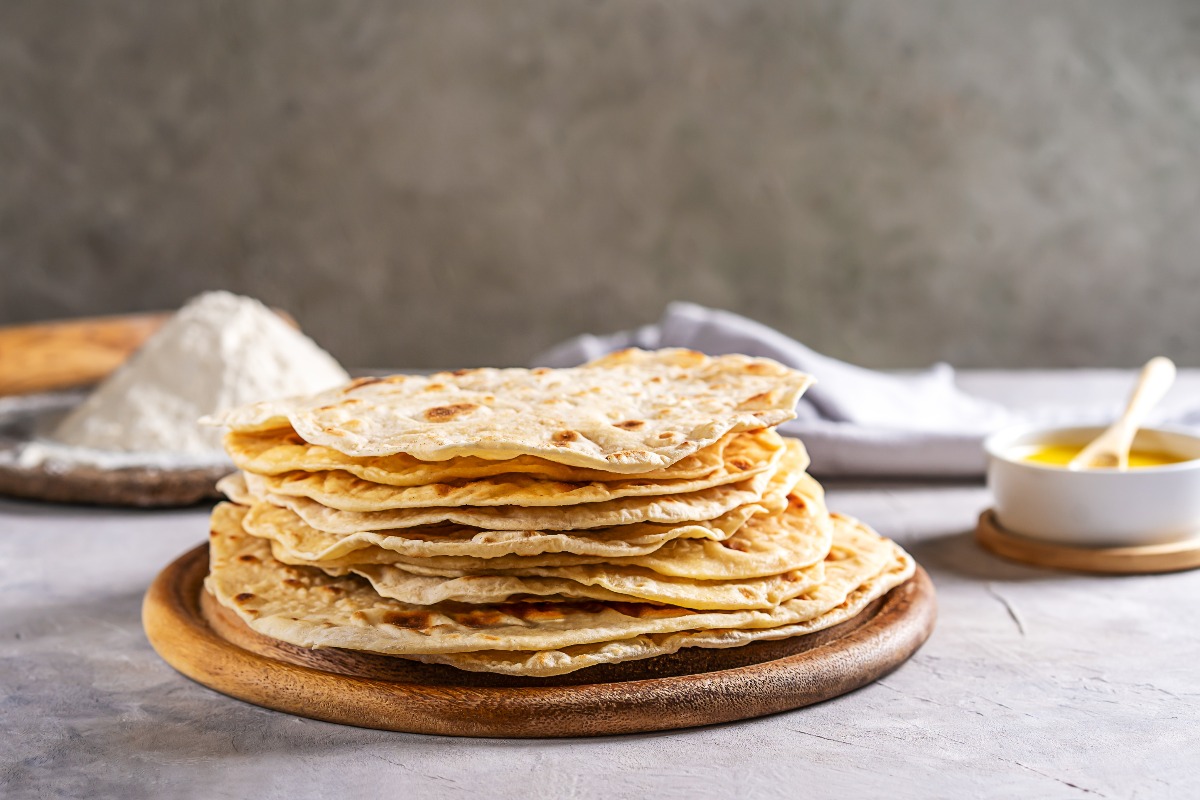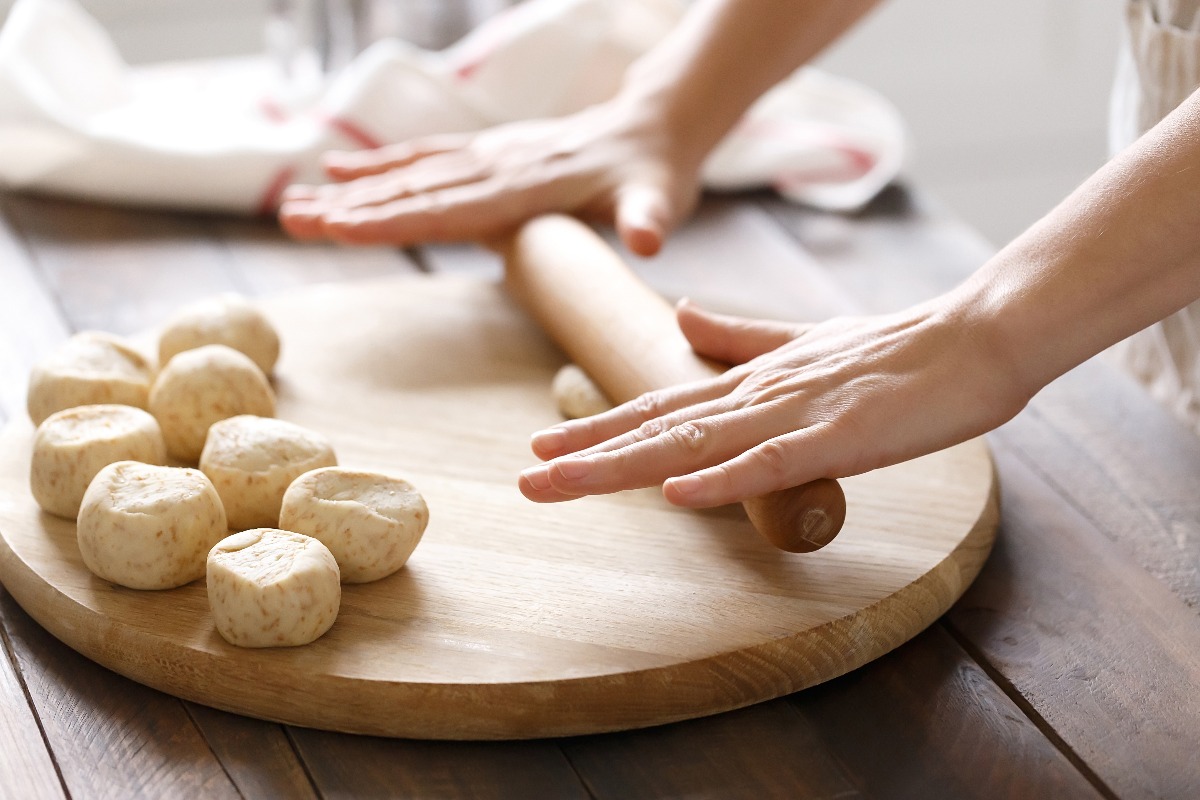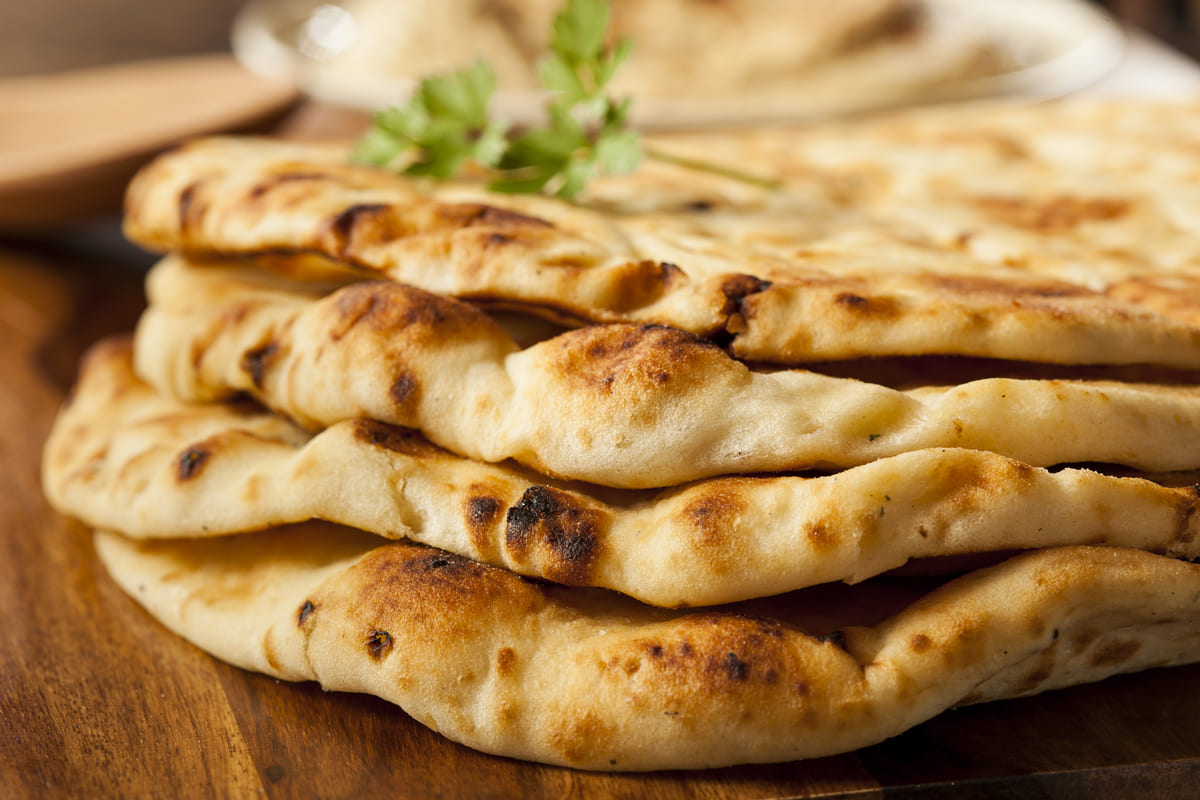Recipes
Chapati, the Indian yeast-free bread


Perfect to accompany the spicy and spicy dishes of Indian cuisine, chapati is a yeast-free bread that is simple to prepare.
In recent times, Indian cuisine has also made its way to our latitudes. Experimenting with curries and various spices is a pleasure as well as a challenge. Among the first recipes you usually come across is chapati, or chapatti.
This Indian bread similar to our flours is prepared with only wholemeal flour, water and salt. It is therefore yeast-free , does not require long resting times and is cooked in a pan or directly on the stove. In short, if you are looking for something to accompany your recipes, chapati bread is perfect!

Ingredients
For the chapati
- Flour 0 – 130 g
- Wholemeal flour – 130 g
- Water – 230 ml
- Salt – 1/2 tsp
Preparation
How to make chapati recipe
First, combine the two flours in a bowl (you can also use wholemeal flour for a more rustic result similar to the original). Add the salt and start pouring in the water little by little, mixing first with a spoon and then by hand.
As soon as the dough begins to take consistency, continue working it on the pastry board. You should obtain a smooth and homogeneous dough . Then leave it to rest under the bowl upside down for 20-30 minutes .
Divide the dough into 8 balls and roll them out one by one with a rolling pin until they reach 1-2 mm thick. Ideally you should get a disc of 15cm in diameter .
Heat a non-stick pan and cook the bread in the pan for about 2 minutes , turning it occasionally. It should swell and form bubbles without burning.
As they are ready , stack them on a plate and cover them with a clean cloth washed without fabric softener. This step is to keep the chapati soft and elastic. Alternatively you can store them in an airtight container until ready to bring them to the table.
Here is a short video showing how to prepare it. The passage over the direct flame is completely optional and only serves to make it swell.
Chapati bread is perfect to accompany classic curry or lentil dahl .
Conservation
The chapati will keep in an airtight container or plastic bag for 2 days . You can heat it in the microwave or in the oven before bringing it to the table.
Origin and history
According to some sources, chapati arrived in Asia in 5000 BC from Egypt. In reality the most probable hypothesis is that he was born in India . The population was dedicated to agriculture but wheat was not among the main crops. Mixed cereals were thus ground and mixed with water to obtain this flattened, yeast-free bread. Today, a bread with mixed grains is called missi roti .
The most modern versions are based only on wholemeal or semi-wholemeal flour and include the addition of salt, omitted in the original recipe as this bread was used to accompany spicy and spicy dishes. Today chapati bread is widespread throughout Southern Asia but also in some areas of Africa and the Middle East.
It is usually cooked on a hot cast iron or aluminum griddle called a tawa . The next step on the direct heat, which makes the bread swell like a balloon, is optional but if done the chapati is called gujrathi phulka . Traditionally, it is served after being brushed with ghee, the typical Indian clarified butter.
Riproduzione riservata © - WT












